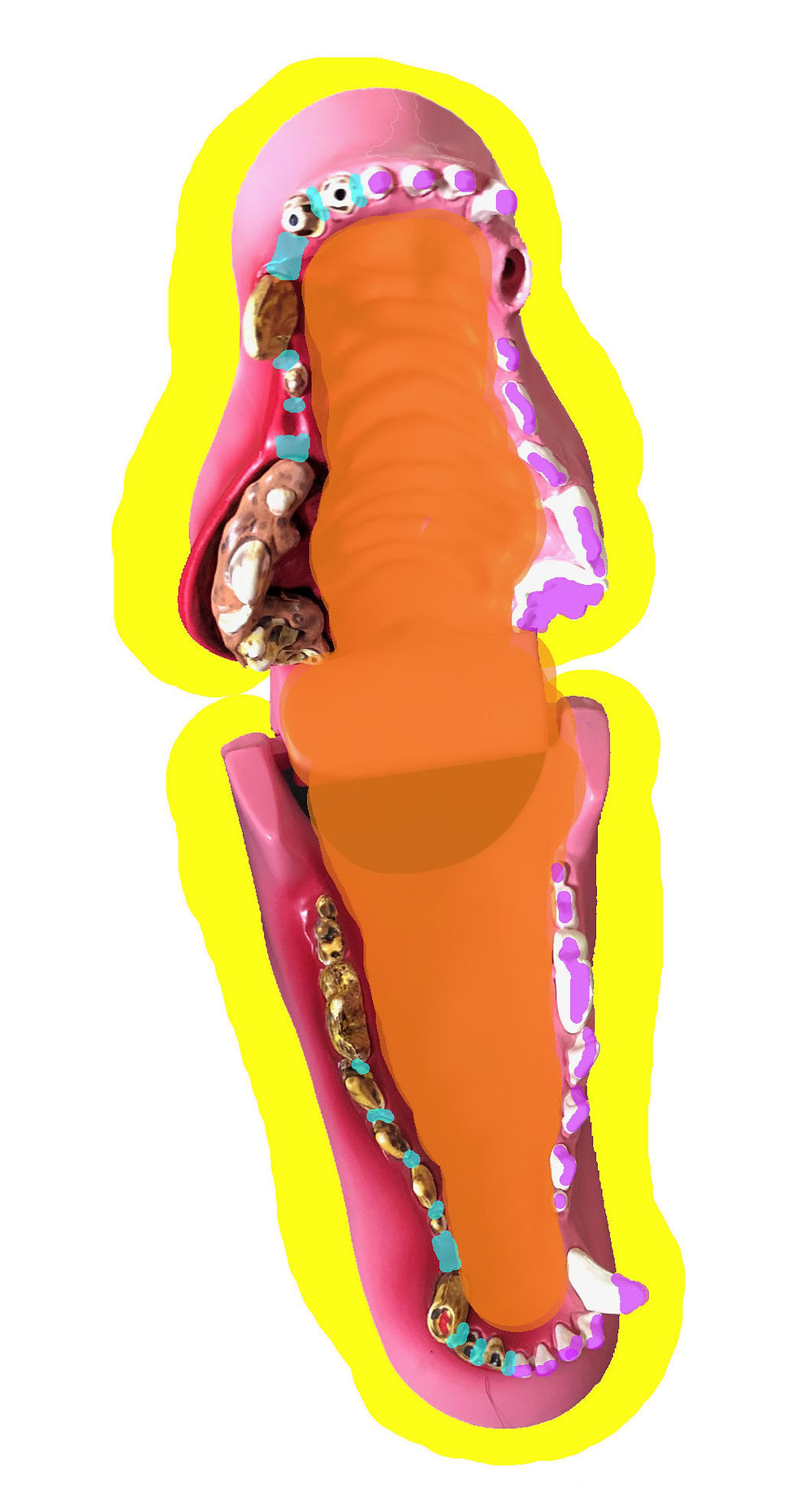What's in a name? Terminology 101!
- Vetsmiles

- Jan 24, 2021
- 3 min read
Let's face it: Veterinary Dentistry is a pretty cool subject! It's got the awesome radiographs, a lot of very satisfying tartar cracking and some pretty funky pathology. We'll be touching on all that and more in this blog, but first let's cover some basic terminology! It might sound a little boring, but it'll be a great help later on (trust me) and it's actually got some cool little facts hidden in there!
There's a surprising amount of structures within the mouth, so you've got to know how to find your way around! Did you know dentistry has it's very own words to describe locations and directions?

The Oral Cavity
The oral cavity is where dentistry magic happens! It is split into two distinct areas: the cavity proper and the vestibule.
The cavity proper is bordered laterally and rostrally by the dental arches, ventrally by the base of the mouth and dorsally by the palate. The caudal border is a bit harder to see, but is defined as the isthmus of the fauces, which is the circular shaped narrowing in the throat. You can locate it by looking for the palatoglossal folds.
Did you know about this second cavity in the mouth? The 'vestibule' is the area between the lips/cheeks and the dental arches. Some of the larger saliva glands deposit saliva here and the shape provided by the lips is important for keeping that saliva inside the mouth!

Proximal, Mesial & Distal
These are directional terms that help us describe the 'front' and 'back' of tooth structures like surfaces, roots and cusps. Which term is used depends on the structure's relation to the midpoint of the dental arch. Mesial structures lie towards this midpoint (for example the two smaller roots of the maxillary P4 are mesial roots), whereas distal structures are further away (for example the larger root of the maxillary P4 is distal). Proximal is used to describe the area where teeth lie adjacent to one another and thus include both the mesial and distal tooth surfaces. (To confuse matters more 'approximal' is used to describe the surfaces of two teeth that actually touch!)

Vestibular, Buccal & Labial
Vestibular is used to describe the 'outside' aspect of tooth structures, ie the side adjacent to the vestibule. This is a nice general term, but if you want to be more precise you could use buccal (cheek) and labial (lip), depending on whether the structure is rostral or caudal to the commissure (lip fold).
Lingual & Palatal
If you've been paying attention you can probably guess that these terms describe the 'inner' aspect of tooth structures. Which one you use depends on whether the structure is located on the maxilla (upper jaw) and thus on the side of the palate (palatal), or whether it is located on the mandible (lower jaw) and thus on the side of the tongue (lingual). Still with me?
Incisal & Occlusal
The final aspect of the tooth surface is the grinding or cutting edge of the tooth, the part which touches the teeth below or above it when the animal chews. Depending on the location of the tooth this surface is either termed incisal (anterior teeth) or occlusal (posterior teeth).
Interdental/interproximal
Now that we can name all the tooth surfaces and directions, we 'only' need a term to describe the space between two teeth. This area is called interdental or interproximal.

Apical & Coronal
We're almost there! These are probably some of the most important and common terms used in dentistry and help us determine whether something is located more towards the crown (coronal) or root apex (apical). You'll see them used a lot in radiography and endodontics.
Pfieuw!! You made it! I know anatomy might not be the most interesting of subjects, but as with any part of veterinary medicine it's important to know what terms you may run into along the way. Knowing these will help you get the most out of posts to follow and help you communicate any of your own findings to others!
We will focus one more post on some anatomy basics before moving on, but I'll be continuing to share anatomy knowlegde through a weekly Sunday Structure Quiz on Instagram stories. See if you can guess the structure and tune in on Wednesdays to find out the answer!
Next up on the blog: Tooth anatomy and numbering!




Comments